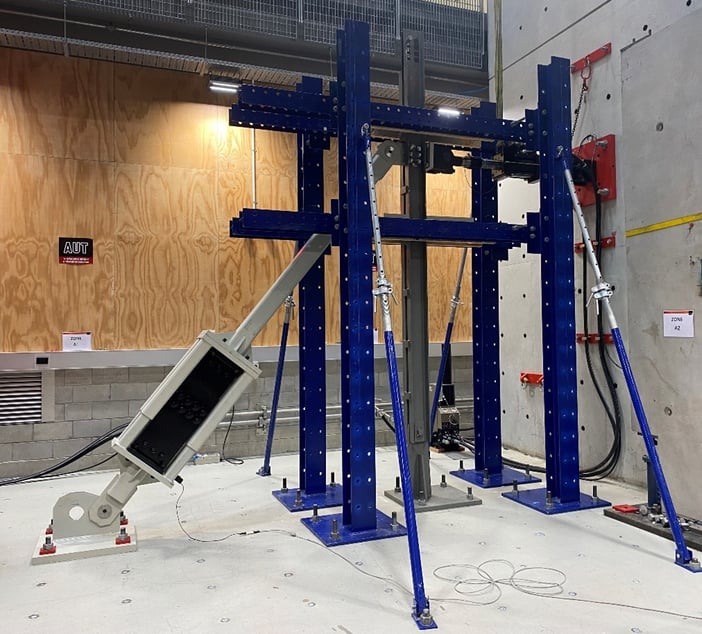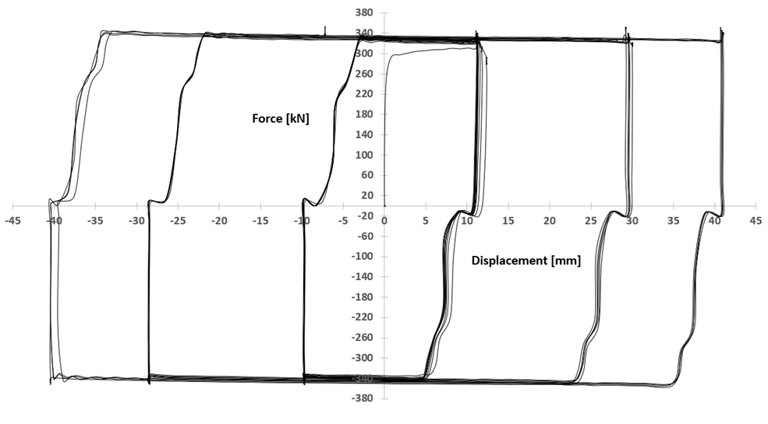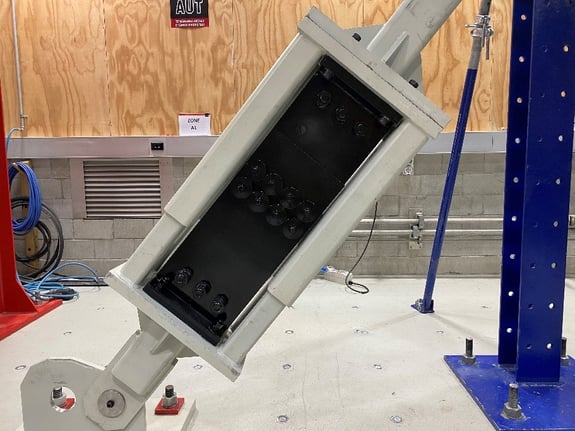Tectonus DFFJ Brace System Test Dynamic Performance as per ASCE 7-16
Tectonus DFFJ is a damping-only friction joint recently developed to complement the self-centering RSFJ. Offering high damping at an attractive price point, the DFFJ is commonly used in braced frames. In this test, conducted at Auckland University of Technology's Structures Lab, we demonstrated its dynamic performance according to ASCE 7-16. The test set up and results are summarised here. The full report is available on request.
Background
The Tectonus Damage-Free Friction Joints (DFFJs) provide efficient damping and ductility for brace applications. The high consistency and very low tolerances of the dynamic performance of Tectonus DFFJs have been the main advantages when compared to other friction-based dampers available in the market.
It should be noted that while friction dampers have sufficient capacity at the component level to resist the local buckling under compression forces, that is not the case for brace applications. Providing lateral stability for brace applications has always been challenging because the initiation of friction sliding in the damper forms a plastic hinge, resulting in brace global buckling at the damper location.
Test Set Up
To demonstrate this, the dynamic performance of Tectonus DFFJ Brace was tested at the Structures Lab of Auckland University of Technology (AUT). Tests were witnessed by an independent Chartered Professional Engineer who is also a member of the New Zealand Society of Earthquake Engineers. (NZSEE).

The loading protocol was specified as per ASCE 7-16, providing a rigorous testing regime (at 0.45Hz) to verify the dynamic performance of the RSFJ.
The number and amplitudes of the loading cycles were as follows:
- 10 cycles at 15mm (37.5% of the maximum displacement)
- 5 cycles at 30mm (75%)
- 3 cycles at 40mm (100%)
The DFFJ adopted for this brace was comprised of 8 bolts with multi-sliding layers with a capacity of about 330kN. The diagonal brace has been loaded laterally by a 250kN MTS actuator.
Watch the video of the test below.
Dynamic Testing Results
The results of the brace dynamic performance is presented below, demonstrating the compatibility of the hysteresis curves after simulated severe events without any stiffness and strength degradation as a result of brace buckling or joint performance compromise.
It should be noted that the performance tolerances are below 10% (significantly less than other bracing systems such as BRB with 80-100%) resulting in a very low Overstrength Factor (OSF). A low OSF enables cost saving through efficient capacity design of the adjacent members, in particular for retrofitting projects.

—
Find out more
For the full report, witnessed and signed by the Chartered Professional Engineer, please contact us and we'll be happy to send it to you.
If you have a project at concept stage or later on in the process we'd welcome the opportunity to discuss whether the RSFJ could be a fit. Our in-house engineering team are here to help.
Contact us now for a free consultation.
